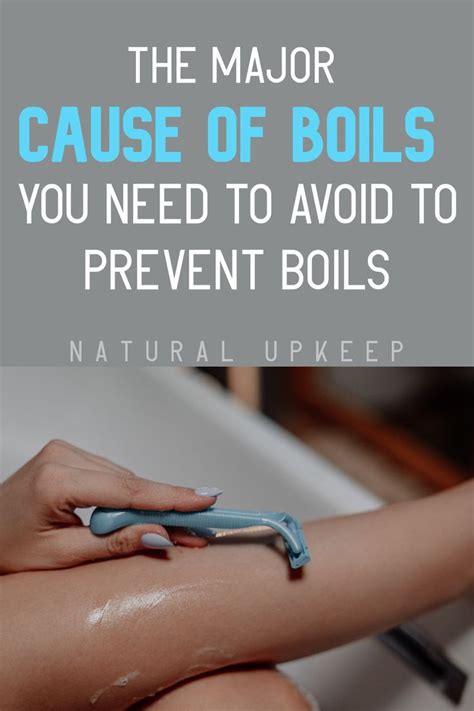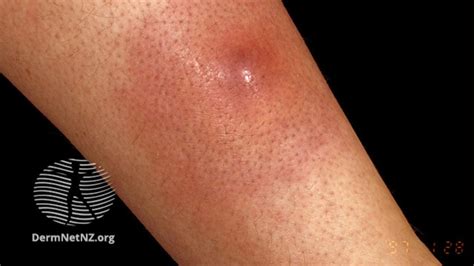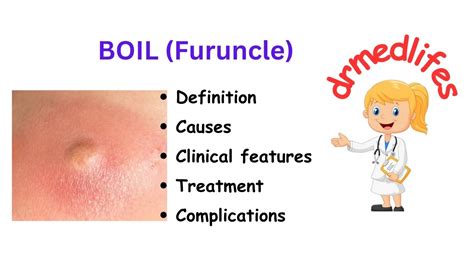Intro
Boils on the skin can be a painful and frustrating condition, affecting anyone regardless of age or health status. They are essentially pockets of pus that form on the skin as a result of bacterial infection, typically caused by Staphylococcus aureus. Understanding the causes, symptoms, and treatment options for boils is crucial for effective management and prevention of potential complications.
The importance of addressing boils lies not only in alleviating the discomfort they cause but also in preventing the spread of infection to other parts of the body or to other individuals. If left untreated, boils can lead to more severe conditions, such as cellulitis, abscesses, or even systemic infections. Therefore, it's essential to seek medical attention if a boil persists, grows, or is accompanied by fever or other signs of infection.
Boils can appear anywhere on the body but are most common in areas prone to sweat, friction, and bacterial growth, such as the face, armpits, buttocks, and groin area. The symptoms of a boil typically start with a red, tender lump that gradually fills with pus as the infection worsens. The skin around the boil may become inflamed, swollen, and painful to the touch. In some cases, a boil may rupture and drain on its own, but it's crucial to monitor the healing process to avoid infection.
Causes and Risk Factors of Boils

Understanding the causes and risk factors of boils is vital for prevention and treatment. Boils are primarily caused by bacterial infections, with Staphylococcus aureus being the most common culprit. The bacteria can enter the skin through small cuts or abrasions, leading to infection. Certain factors can increase an individual's risk of developing boils, including poor hygiene, compromised immune systems, diabetes, and skin conditions such as eczema or acne.
Additionally, living in close quarters with someone who has a boil can increase the risk of transmission, as the bacteria can spread through skin-to-skin contact or by sharing personal items. Recognizing these risk factors can help individuals take preventive measures, such as maintaining good hygiene, avoiding sharing personal items, and managing underlying health conditions.
Symptoms of Boils

The symptoms of boils can vary depending on the severity of the infection and the individual's overall health. Initially, a boil may appear as a small, red, and tender lump on the skin. As the infection progresses, the lump can grow larger and become filled with pus, leading to increased pain and discomfort. The skin around the boil may become inflamed, swollen, and warm to the touch. In some cases, boils can rupture and drain, which may provide temporary relief but also increases the risk of infection spreading to other areas.
It's essential to monitor the symptoms of a boil closely and seek medical attention if any of the following occur: the boil grows larger, becomes more painful, or is accompanied by fever, redness, or swelling that spreads beyond the initial site. These signs can indicate a more severe infection that requires medical intervention.
Treatment Options for Boils
Treatment for boils depends on the severity of the infection and the individual's overall health. For small, uncomplicated boils, applying warm compresses to the affected area can help bring the pus to the surface, allowing the boil to rupture and drain on its own. Keeping the area clean and applying antibiotic ointment can also promote healing and reduce the risk of infection.
For larger or more severe boils, medical intervention may be necessary. A healthcare provider may prescribe antibiotics to treat the bacterial infection or perform a procedure to drain the boil. In some cases, especially if the boil is large or not responding to treatment, surgical incision and drainage may be required.
Home Remedies for Boils

Several home remedies can help manage the symptoms of boils and promote healing. Applying warm compresses, as mentioned earlier, is a common and effective method to encourage the boil to come to a head and drain. Keeping the area clean with mild soap and water, and applying antibiotic ointment can also help prevent infection and promote healing.
Other home remedies include using tea tree oil, known for its antibacterial properties, or applying a paste made from baking soda and water to help draw out the pus. However, it's crucial to consult with a healthcare provider before trying any home remedies, especially if the boil is large, painful, or accompanied by other signs of infection.
Prevention of Boils
Preventing boils involves maintaining good hygiene, managing underlying health conditions, and avoiding behaviors that can increase the risk of bacterial infection. Practicing good hygiene includes washing hands regularly, especially after touching the boil, and keeping the affected area clean. Avoiding sharing personal items, such as towels or razors, can also reduce the risk of transmission.
Managing underlying health conditions, such as diabetes or skin conditions, can also help prevent boils by reducing the risk of bacterial infection. Maintaining a healthy diet, staying hydrated, and avoiding tight clothing that can cause friction and sweat can also contribute to preventing boils.
Complications of Boils

If left untreated or not properly managed, boils can lead to several complications. One of the most common complications is the spread of infection to other parts of the body, which can lead to conditions such as cellulitis or abscesses. In rare cases, the infection can become systemic, leading to life-threatening conditions such as sepsis or endocarditis.
Other complications can include scarring, especially if the boil ruptures and drains improperly, or the formation of carbuncles, which are clusters of boils that can be more challenging to treat. In some cases, recurrent boils can be a sign of an underlying condition, such as diabetes or an immune system disorder, which requires medical attention.
When to Seek Medical Attention
It's essential to seek medical attention if a boil exhibits any signs of severe infection or if the individual has a weakened immune system. Signs that require medical attention include a boil that grows larger, becomes more painful, or is accompanied by fever, redness, or swelling that spreads beyond the initial site.
Additionally, if a boil does not improve with home treatment, recurs frequently, or is located in a sensitive area, such as the face or spine, medical attention is necessary. A healthcare provider can assess the boil, provide appropriate treatment, and address any underlying conditions that may be contributing to the infection.
Conclusion and Next Steps

In conclusion, boils on the skin can be a painful and potentially serious condition that requires prompt attention and proper management. Understanding the causes, symptoms, and treatment options for boils is crucial for effective care and prevention of complications. By maintaining good hygiene, managing underlying health conditions, and seeking medical attention when necessary, individuals can reduce their risk of developing boils and ensure proper healing if a boil does occur.
We invite you to share your experiences with boils, ask questions, or provide feedback on this article. Your input can help others understand and manage this condition better. Please comment below, and let's start a conversation about boils and skin health.
What are the primary causes of boils?
+Boils are primarily caused by bacterial infections, with Staphylococcus aureus being the most common cause. Poor hygiene, compromised immune systems, and certain skin conditions can increase the risk of developing boils.
How can I prevent boils from occurring?
+Preventing boils involves maintaining good hygiene, managing underlying health conditions, and avoiding behaviors that can increase the risk of bacterial infection. Practicing good hygiene, avoiding sharing personal items, and managing conditions like diabetes or skin conditions can help reduce the risk of boils.
When should I seek medical attention for a boil?
+It's essential to seek medical attention if a boil exhibits signs of severe infection, such as growing larger, becoming more painful, or being accompanied by fever, redness, or swelling that spreads beyond the initial site. Additionally, if a boil does not improve with home treatment, recurs frequently, or is located in a sensitive area, medical attention is necessary.
